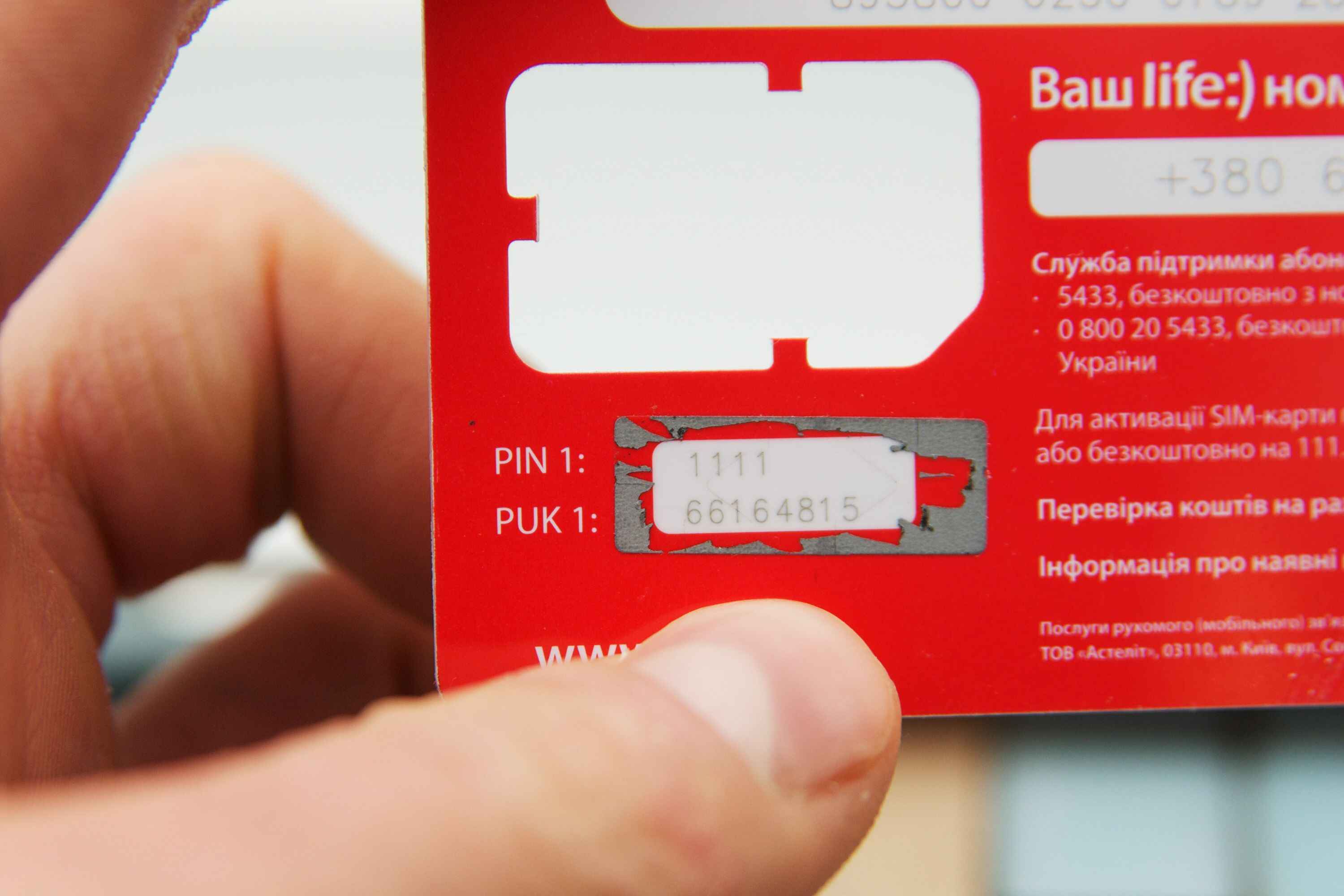Introduction
In the modern era, technology has revolutionized the way we interact with various services, including banking. One such technological advancement that is playing a crucial role in improving banking services is Interactive Voice Response (IVR). IVR is a communication technology that enables customers to interact with automated systems through voice or input via telephone keypad.
As banks strive to provide more seamless and convenient experiences for their customers, IVR has emerged as a vital tool. By automating various processes and providing self-service options, IVR streamlines banking operations and enhances customer satisfaction.
In this article, we will explore what IVR means in the banking industry, how it works, the benefits it offers, common features in banking IVR systems, examples of IVR solutions in banking, and the challenges and considerations associated with implementing IVR in a banking environment.
By understanding the concept of IVR and its application in the banking sector, we can grasp the importance of this technology in transforming traditional banking practices and delivering a more efficient and personalized customer experience.
Definition of IVR
Interactive Voice Response (IVR) is a telephony technology that allows individuals to interact with automated systems through voice recognition or by using the keypad on their telephone. IVR systems are designed to handle high call volumes and provide self-service options to customers, reducing the need for human assistance and improving overall efficiency in various industries, including banking.
When a customer calls a bank’s IVR system, they are greeted with pre-recorded messages that prompt them to provide specific inputs or select from a menu of options using their telephone keypad. These inputs are then processed by the IVR system, which in turn provides the appropriate response or directs the caller to the appropriate department or self-service feature.
IVR technology utilizes automatic speech recognition (ASR) or dual-tone multi-frequency (DTMF) tones to interpret and process customer inputs. ASR enables the system to understand and analyze spoken words, while DTMF enables customers to input numerical selections using their telephone keypad.
The power of IVR lies in its ability to handle a wide range of customer queries and transactions, including balance inquiries, fund transfers, loan applications, and bill payments, among others. IVR systems can provide customers with real-time information, process transactions, and route calls to the relevant departments or agents when additional assistance is required.
Furthermore, IVR systems can be integrated with other technologies, such as customer relationship management (CRM) systems, to access customer information and personalize the interaction based on the caller’s history and preferences. This level of customization enhances the overall customer experience and increases customer satisfaction.
Overall, IVR technology has significantly transformed the way banks and other industries handle customer interactions. By leveraging advanced voice recognition and phone keypad inputs, IVR streamlines the process, reduces waiting times, and empowers customers to access services and information at their convenience.
How IVR Works in Banking
Interactive Voice Response (IVR) technology plays a pivotal role in enhancing the efficiency and accessibility of banking services. By automating various processes and providing self-service options, IVR systems streamline banking operations and improve the overall customer experience.
When a customer calls a bank’s IVR system, they are typically greeted with a pre-recorded welcome message, followed by a menu of options. These options can include checking account balances, transferring funds, making bill payments, requesting a loan, or speaking with a customer service representative.
By navigating through the menu using their telephone keypad or by using voice commands (if the IVR system supports automatic speech recognition), customers can select the desired service or query they would like to access.
Once the customer has made their selection, the IVR system processes the input and provides the appropriate response. For instance, if a customer wants to check their account balance, they may be asked to enter their account number and a security code. The IVR system verifies the information provided, retrieves the account balance, and communicates it to the customer through pre-recorded messages or speech synthesis technology.
If the customer wishes to transfer funds between accounts, they will be prompted to enter the relevant account numbers and the amount to be transferred. The IVR system validates the information, updates the account balances, and provides confirmation to the customer.
In some cases, customers may have more complex queries or require assistance beyond the capabilities of the IVR system. In such instances, the IVR system can seamlessly transfer the call to a customer service representative. The IVR system can pass along relevant information, such as the customer’s account details or the reason for the call, to the representative, reducing the need for the customer to repeat information.
IVR systems in banking can also be integrated with other technologies, such as speech analytics or natural language processing, to provide a more advanced and personalized experience. These technologies enable the system to understand and respond to customer inquiries using natural language, making the interaction feel more conversational and intuitive.
Overall, IVR technology in banking streamlines processes, reduces wait times, and empowers customers to access a wide range of banking services conveniently. By leveraging automation and self-service options, IVR systems enhance operational efficiency, increase customer satisfaction, and free up human resources to focus on more complex tasks.
Benefits of Using IVR in Banking
Implementing Interactive Voice Response (IVR) technology in the banking sector offers numerous benefits to both financial institutions and their customers. Let’s explore some of the key advantages of using IVR in banking:
- 24/7 Availability: With IVR, banks can provide round-the-clock access to their services. Customers can perform transactions and access information at any time, without being limited by traditional banking hours. This enhances convenience and customer satisfaction.
- Reduced Wait Times: By automating routine processes and providing self-service options, IVR significantly reduces wait times for customers. They no longer need to wait for a customer service representative to assist them with simple inquiries, such as balance inquiries or fund transfers.
- Efficiency and Cost Savings: IVR systems can handle a high volume of calls simultaneously, allowing banks to efficiently serve multiple customers at once. This reduces the need for additional human staff, resulting in cost savings for the bank while improving operational efficiency.
- Personalized Customer Experience: Integrating IVR with customer relationship management (CRM) systems enables banks to provide personalized experiences. The IVR system can retrieve customer data, such as account details or previous interactions, to tailor the interaction accordingly, making customers feel valued and understood.
- Enhanced Security: IVR systems employ various security measures, such as voice recognition or secure PIN verification, to ensure the integrity of customer information and transactions. This helps protect against fraud and unauthorized access.
- Cost-Effective Customer Support: IVR allows customers to resolve common issues or perform routine tasks without the need for human intervention. This frees up customer service representatives to focus on more complex inquiries and issues, resulting in more cost-effective customer support.
- Consistency and Accuracy: IVR systems provide consistent and accurate information to customers, ensuring that all transactions and inquiries are handled in a standardized manner. This reduces the potential for human error and enhances overall customer satisfaction.
- Data Collection and Analysis: IVR systems can collect valuable data about customer interactions, preferences, and behaviors. Banks can use this data to gain insights about their customers, identify trends, and make data-driven decisions to improve their services.
In summary, implementing IVR technology in the banking industry offers a wide range of benefits, including improved accessibility, reduced wait times, operational efficiency, personalized experiences, enhanced security, cost-effective customer support, consistent information delivery, and valuable data insights. By embracing IVR, banks can elevate their customer service, streamline processes, and ultimately deliver a more satisfying banking experience.
Common Features in Banking IVR Systems
Interactive Voice Response (IVR) systems in the banking industry incorporate various features that enhance the experience for customers and optimize banking operations. Let’s explore some of the common features found in banking IVR systems:
- Menu-driven: Banking IVR systems typically provide a menu-driven interface, presenting callers with a series of options to choose from. Customers can use their telephone keypad or voice commands to navigate through the menu and select the desired service or information they require.
- Account Balance Inquiries: One of the most common features in banking IVR systems is the ability for customers to check their account balances. By entering their account number and secure identification code, customers can quickly obtain real-time information about their account balances.
- Fund Transfers: Banking IVR systems often offer the option for customers to transfer funds between their accounts. Customers can provide the necessary account information and the amount they wish to transfer, and the IVR system securely processes the transaction.
- Bill Payments: IVR systems enable customers to make bill payments over the phone using their bank accounts. Customers can enter the payment amount, account details, and authorization information, allowing them to conveniently settle their bills without the need for manual paperwork or visiting a physical branch.
- Loan Applications and Inquiries: Many banking IVR systems provide customers with the option to inquire about loan products and even initiate loan applications. Customers can receive information about interest rates, loan terms, and application procedures, simplifying the initial stages of the loan process.
- Branch and ATM Locator: IVR systems can assist customers in locating the nearest branches or ATMs based on their geographical location. By providing zip codes or other location information, customers can obtain information about nearby banking facilities and their operating hours.
- Customer Service Support: Banking IVR systems often include a customer service support feature, enabling customers to connect with a live agent if their inquiry or issue cannot be resolved through self-service options. The IVR system can seamlessly transfer the call to the appropriate customer service representative, along with any relevant information collected during the IVR interaction.
- Security Verification: IVR systems prioritize security by incorporating advanced verification methods. This can include secure PIN entry or voice biometrics to authenticate the caller’s identity before providing access to account information or processing certain transactions.
These are just a few examples of the common features found in banking IVR systems. Financial institutions have the flexibility to customize and tailor the features to meet their specific customer needs, ensuring a seamless and efficient banking experience.
Examples of IVR Solutions in Banking
Many banks around the world have implemented Interactive Voice Response (IVR) solutions to enhance their customer service and streamline banking operations. Let’s explore a few examples of how IVR is used in the banking industry:
- Balance Inquiries and Fund Transfers: IVR systems allow customers to check their account balances and perform fund transfers without the need for human assistance. Customers can simply call the bank’s IVR number, enter their account information, and follow the prompts to access their account balance or transfer funds.
- Bill Payments: IVR solutions in banking enable customers to make bill payments directly through the phone. Customers can enter the necessary details, such as payment amount and account information, and complete the transaction securely and conveniently, saving time and effort.
- Loan Applications: Many banks offer IVR systems that facilitate loan inquiries and applications. Customers can access information about various loan options, interest rates, and eligibility criteria through the IVR system. They can also initiate the loan application process by following the prompts and providing the required details.
- Card Activation and PIN Generation: Banks utilize IVR solutions to simplify the process of activating newly issued credit or debit cards. Customers can call the IVR number provided by the bank, enter their card details, and follow the instructions to activate the card and set a secure PIN.
- Branch and ATM Information: IVR systems in banking often provide customers with information about the nearest branches or ATMs. By entering their location or zip code, customers can quickly find the nearest banking facilities, their operating hours, and any special services available.
- Account Management: IVR solutions enable customers to perform various account management tasks, such as updating personal information, changing address or contact details, and managing account preferences. Customers can navigate through the IVR menu and select the appropriate options to make these changes promptly.
- Customer Support and Service Requests: IVR systems in banking are also utilized for customer support and handling service requests. Customers can connect with customer service representatives by following the IVR prompts, allowing them to resolve complex inquiries or request assistance for specific issues.
These examples demonstrate the versatility and effectiveness of IVR solutions in banking. By implementing IVR systems, banks can provide convenient self-service options for their customers, reduce wait times, and optimize their operations, ultimately enhancing the overall banking experience.
Challenges and Considerations of Using IVR in Banking
While Interactive Voice Response (IVR) technology offers numerous benefits in the banking industry, there are also challenges and considerations that banks must address when implementing and using IVR systems. Here are some key factors to consider:
- Complex Queries: IVR systems are primarily designed to handle common and routine inquiries and transactions. When customers have complex or unique queries that cannot be resolved through self-service options, they may become frustrated with the limitations of the system. Banks must ensure that there is a seamless transition from the IVR to live customer service representatives to address these complex queries.
- Language and Accent Recognition: IVR systems need to be equipped with accurate language and accent recognition capabilities to effectively understand and interpret customer inputs. Banks serving diverse customer bases must ensure that their IVR systems can handle various languages and accents to offer a seamless experience for all customers.
- Security Concerns: IVR systems deal with sensitive customer information, such as account numbers and personal identification details. Banks must implement robust security measures to ensure the privacy and integrity of customer data. This includes encryption protocols, secure PIN verification, and regular system audits to detect and address any vulnerabilities.
- Usability and User Experience: Banks should focus on designing IVR systems that are intuitive and user-friendly. Complex menu structures, lengthy prompts, or unclear instructions can lead to confusion and customer frustration. Regular testing and user feedback should be incorporated to refine the IVR system and improve its usability and overall user experience.
- Call Abandonment: Long wait times or repetitive prompts within the IVR system can result in customers abandoning their calls. This can lead to customer dissatisfaction and potential loss of business. Banks should monitor and optimize their IVR systems to minimize call abandonment rates by reducing wait times, simplifying menu options, and ensuring prompt and accurate responses.
- Integration with Backend Systems: IVR systems need to be seamlessly integrated with the bank’s backend systems, such as customer databases and transaction processing platforms. This enables real-time access to customer information and ensures accurate and up-to-date responses. Banks should consider the complexity of integrating IVR systems with their existing infrastructure when implementing IVR solutions.
- Maintaining System Availability: To provide a seamless customer experience, banks must ensure that their IVR systems are available and functional at all times. Regular maintenance, system upgrades, and backup plans should be in place to minimize system downtime and prevent customer frustration due to inaccessible IVR services.
By addressing these challenges and considerations, banks can mitigate potential issues and optimize the use of IVR technology to deliver efficient and satisfying banking experiences to their customers.
Conclusion
Interactive Voice Response (IVR) technology has revolutionized the way banking services are delivered to customers. By leveraging automated systems and self-service options, banks have been able to enhance operational efficiency, improve customer experiences, and streamline processes.
In this article, we explored what IVR means in the context of the banking industry and how it works. We discussed the benefits of using IVR in banking, such as 24/7 availability, reduced wait times, personalized customer experiences, and cost savings. We also highlighted common features found in banking IVR systems, including balance inquiries, fund transfers, bill payments, and loan applications.
Additionally, we examined real-world examples of how banks utilize IVR solutions to provide convenient self-service options, such as account management, card activation, and branch/ATM information. We also discussed the challenges and considerations associated with implementing IVR in banking, such as addressing complex queries, ensuring language and accent recognition, maintaining system security, and optimizing user experience.
In conclusion, IVR technology has transformed the banking industry by enhancing accessibility, efficiency, and customer satisfaction. By embracing IVR solutions, banks can provide round-the-clock services, reduce wait times, automate routine tasks, and free up human resources to focus on more complex inquiries. However, it’s crucial for banks to carefully consider the challenges and considerations associated with IVR implementation to ensure a smooth and seamless customer experience.
With continuous advancements in technology, the future of IVR in banking holds great potential. As AI and natural language processing capabilities continue to evolve, IVR systems will become even more intuitive, capable of understanding complex queries, and delivering personalized experiences. The integration of biometric authentication and advanced security measures will also help enhance data protection and user trust.
Overall, IVR technology is a powerful tool that will continue to transform the banking landscape, offering innovative and convenient experiences for customers while improving operational efficiency for financial institutions.

























